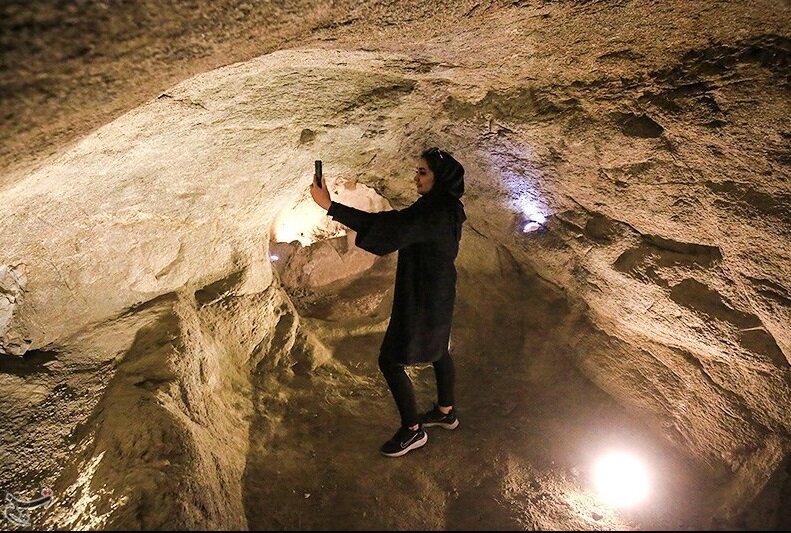Samen underground city to host workshop on troglodytic architecture

TEHRAN – The national site of Samen underground city in Hamedan province is set to hold a workshop on troglodytic architecture.
Scheduled for May 24, the workshop is aimed at turning the spotlight on labyrinthine underground “cities”, which were used as defensive shelters.
Those hand-carved places do not require major construction materials but require a variety of tools as an ax, hammer, chisel, and sledgehammer to shape the interior space.
Based on scientific surveys, the creation of handcrafted troglodytic architectural sites depends on several factors, including climatic and geographic conditions, defense, security, durability, and religion, which are closely related to the cultural, political, social, and economic circumstances.
This architecture can be divided into different formal types in terms of its external form, its interior, and its function (religion, tombs, dwellings, and housing).
The Same underground settlement dates back to the Parthian period (247 BC – 224 CE) based on archaeological evidence. The underground city has 25 rooms carved into the rock, interconnected tunnels, and corridors. The underground complex seems to have been used first for religious purposes, then as a cemetery, and finally as an emergency shelter.
Many great examples of this architecture have been realized in different regions in Iran due to the different climate zones. This unique architecture is at odds with traditional settlement patterns and construction methods and can always take advantage of the mountains and valleys on the ground or wall, which is a good way to control climate variability in different regions.
The ancient country is a haven for cave architecture that is somewhat forgotten, although it is full of life and creativity. The village of Kandovan in the northwest is one of the most famous examples of troglodyte architecture in the country. Its ice cream cone-shaped houses resemble those of Turkiye's Cappadocia.
Hamedan, called Ecbatana in ancient times, was one of the largest cities of antiquity. Pitifully little remains of antiquity, but significant parts of the city center have been left to be excavated. Ecbatana was the capital of Media and later a summer residence of the Achaemenian kings who ruled Persia from 553 to 330 BC. reigned.
Hamadan has had many names: it was possibly the Bit Daiukki of the Assyrians, Hangmatana, or Agbatana, to the Medes, and Ecbatana to the Greeks. One of the Median capitals, under Cyrus II (the Great; died 529 BC) and later Achaemenian rulers, it was the site of a royal summer palace.
About 1220 Hamedan was destroyed by the Mongols. In 1386, it was sacked by Timur (Tamerlane), a Turkic conqueror, and the inhabitants were massacred. It was partly restored in the 17th century and subsequently changed hands often between Iranian ruling houses and the Ottomans.
AFM
